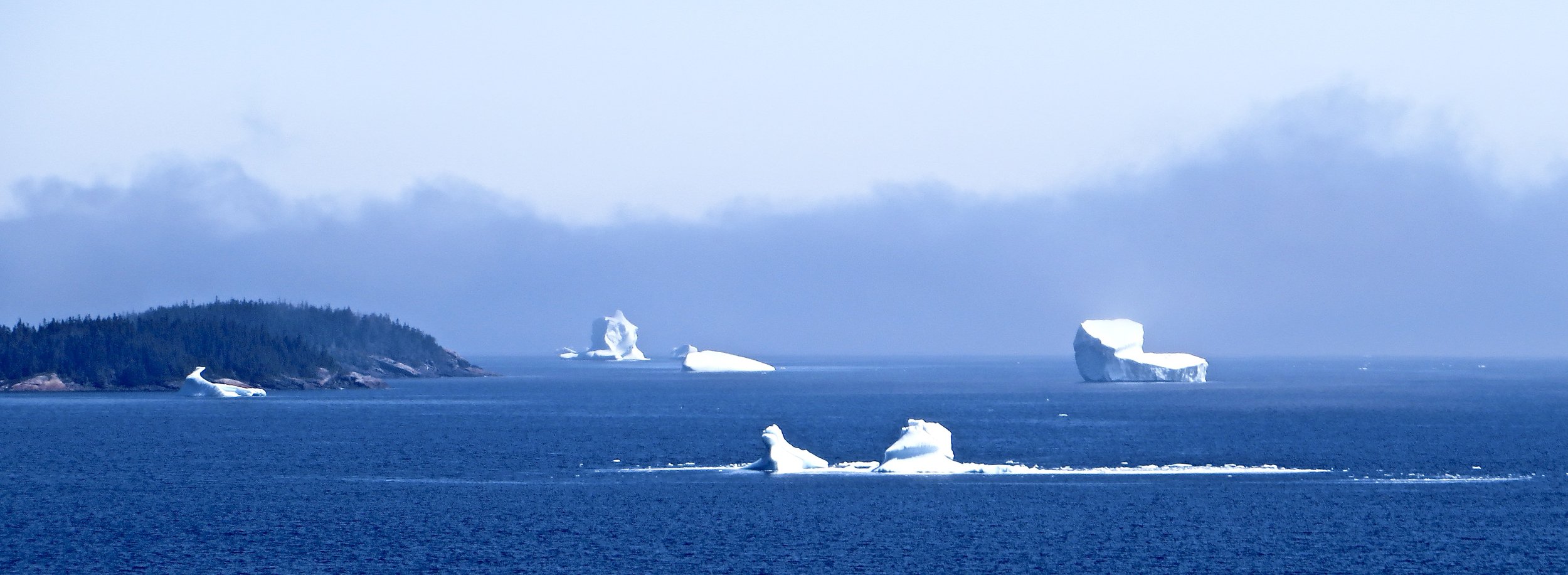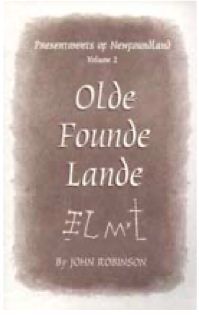St. Brendan: The Newfoundland Navigator?
St. Brendan, aka Brendan the Navigator, was a monk who lived in 6th century Ireland. Little is known with any certainty about his life. Much of what is known comes from the tales of a fantastic voyage he took to find the Isle of The Blessed, now often called St. Brendan’s Island. The stories were recorded in 900AD under the name Navigatio Sancti Brendani Abbatis (or Voyage of Saint Brendan the Abbot).
In the 1.5 millennia since Brendan died, people have become fascinated by his story, looking past its fantastic, miraculous elements and wondering if, at its core, it is a recording of actual knowledge of the globe. They wonder whether ancient Irish seafarers might have crossed the Atlantic, visited North America and spent some time in Newfoundland — 500 years before the Norse set up camp in L’Anse aux Meadows.
St. Brendan’s Voyage
Brendan’s journey, is described in nearly 30 chapters of the Navigatio Sancti Brendani Abbatis (PDF).
In short, as an elderly man St. Brendan set out with a small crew from the Kerry coast in a boat made of wood and leather. He went on a multi-year voyage in search of the Island of Paradise.
Gannet at Cape St. Mary’s, NL
Brendan’s voyage took him from island to island. Along the way he saw many things — strange creatures, biblical figures and sights he struggled to describe.
The Navigatio records Brendan and crew having a fire on the back of a whale. It describes islands with sheep, birds, plentiful fruit, and fiery forges. The crew saw a silver crystal column in the sea and had to contend with sea monsters, rocky coastline and long bouts of fog.
Finally Brendan and crew arrived on an island so large that after 40-days exploring he found no limit to it. He encountered a young man who told him that the long journey had, in part, been to uncover the mysteries of the ocean and that Brendan must return home. Which, under the guidance of God, he did.
The Voyage of St. Brandan by Edward Reginald Frampton (1908) Oil on Canvas. Public domain.
The return journey is not recorded but the Navigatio ends with Brendan spending his last days peacefully in Ireland.
Fact in the Fiction?
It’s hard to see the Navigatio as fact — it very much reads as fantasy. That said, over the years readers have noticed that portions of the voyage, though described colourfully, might bear some similarities to islands and characteristics of the North Atlantic.
Might the island of fire and forges be a volcanically active Iceland? Maybe the crystal column is an early tourist’s description of ‘Iceberg Alley?’ And fog-shrouded rocky coastlines sound all too familiar in Newfoundland.
It’s an interesting thought and one that has been bolstered by other early writings. The first page of the Icelandic saga Íslendingabók says that, prior to the 9th century Norse settlement of Iceland, the Papar were there. Papar was term meaning Irish monks, suggesting that ancient Irish seafarers made it as far as Iceland.
So, what does this prove? Absolutely nothing.
Ancient texts were often based on oral histories and written long after the events occurred. They need to be read with a lot of caution and supplemented with physical evidence, where possible.
Putting St. Brendan to the Test
In 1976 adventurer Tim Severin set out to test St. Brendan’s voyage. He built a replica boat from wood and ox hide and set out from Kerry, Ireland into the north Atlantic. Over the course of 13 months, travelling island-to-island Severin and his crew made it to Peckford Island off northeastern Newfoundland.
Along the way he logged many sights that lined up to the unusual descriptions in Brendan’s Navigatio. Severin wrote a popular (and highly entertaining) account of his voyage. It was also the subject of a documentary:
The Brendan Voyage documentary, Pt. 1 (Part 2)
Severin showed that the technology of the ancient Irish could have made a transatlantic voyage. It doesn’t, of course, offer us any knowledge as to whether they did actually make such a visit.
To show that St. Brendan arrived in North America some tangible evidence would be required.
Evidence Of Brendan in Newfoundland
The best way to show that St. Brendan made it to Newfoundland would be to find some physical evidence of his voyage — something on the island to show that Europeans were here 1500 years ago.
To date, nobody has found anything definitive. A few curiosities have peaked some interest, though.
St. Brendan’s Rock
Perhaps the best known of these is St. Brendan’s Rock (or the Irish Rock) in Lunaire-St. Griquet on Newfoundland’s northern peninsula.
St. Brendan’s Rock, by Ryan Patey is licensed under CC BY-SA 2.0
For generations, people in the region have wondered about some unusual lichen-covered marks inscribed on the stone — marks that might be writing. It’s been suggested the carvings resemble the Ogham alphabet — a system of writing used by the ancient Irish. If you’d like to check it out yourself there is a trail that will get you there.
According to a post on the (fantastic) NL Archeology blog, the rock and site have turned up nothing to tie them to Brendan or that time period. The inscription, however, remains a bit of a mystery.
Haystack Rock
John Robinson’s Olde Founde Lande
Haystack is a resettled community on Long Island in Placentia Bay. In a 1997 book Presentments of Newfoundland : Vol. 2 : Olde Founde Lande, author John Robinson asserts that some carvings in a rock on the community’s shoreline may be evidence of St. Brendan’s visit. Robinson claims the 4 symbol carving, which is reproduced on the cover of his book, indicates the year of Brendan’s voyage.
They probably don’t.
Once again, check out NL Archeology for an alternate explanation and some great images of the Haystack rock.
St. Brendan’s, Newfoundland
Brendan the Navigator does have one definite legacy in Newfoundland — he gets name checked in the Bonavista Bay community of St. Brendan’s.
The island community with Irish roots, was named in the mid 1800s by a priest. St. Brendan’s was chosen because it paid homage to the community’s Irish roots, religion and seafaring lifestyle.
St. Brendan’s is the last true island community in Bonavista Bay. It requires an hour long ferry ride to get there. I’ve always thought of it as a bit of a hidden gem in the province — a day trip on the modern ferry takes you on a sheltered, scenic tour of the islands of Bonavista Bay. It’s wonderful way to spend an afternoon…
And, if you time it right, you might even get to see whales, fog and if you’re lucky, a crystal column or two.






